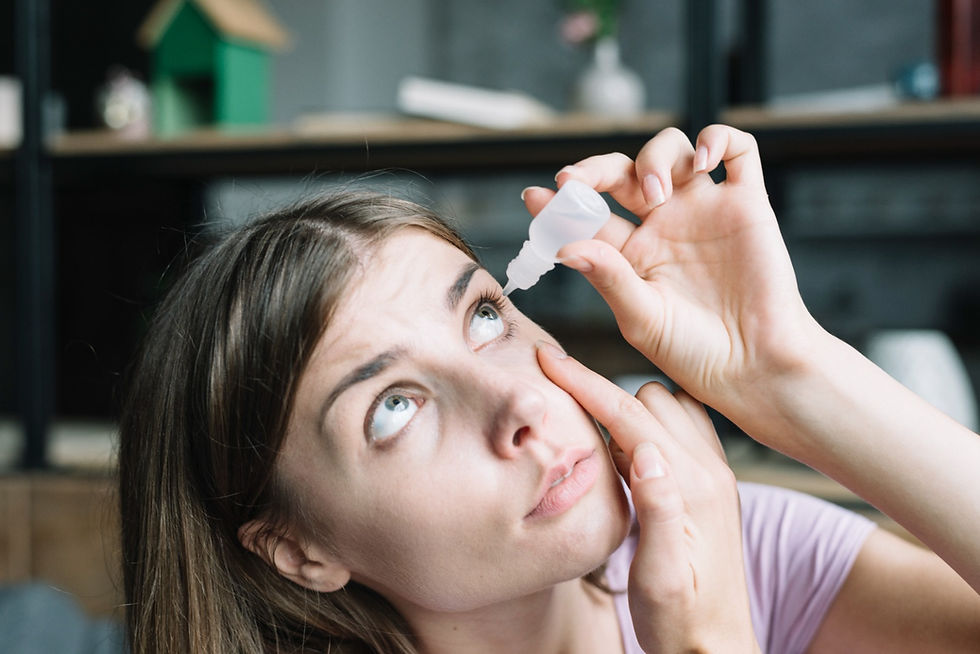
1.Wash your hands and stand in front of a mirror.
2.Take off the bottle's cap.
3.Pull your lower eyelid down gently while bending your head backwards.
4.Above one eye, place the dropper. One drop should be squeezed into the pocket
created when the lower eyelid is gradually pulled down.
5.To keep the dropper tip clean, avoid touching your eye, eyelashes, or anything else with it.
6.After applying the eye drop, release the eyelid and keep the eye shut for as long as you can (2-3 minutes, at least), with your head tipped downwards.
7.One finger should be softly pressed on the tear duct (inner corner of the eye) for a minute.
8.Use a tissue to remove any liquid that accidentally drips onto your cheek.
9.If the drop is recommended for both eyes, repeat in the other eye.
10.Wait at least five minutes before applying the second eye drop when two different eye drop preparations are used at the same time of day. As a result, the first drop is neither diluted or washed away.
Useful tips about eye drops:
1.Keep the bottle closed in a cool, dark place
2.Never allow the dropper nozzle or dropper touch your fingers, eyes, or any other surface. This prevents the spread of pathogens.
3.Do not share drops.
4.Keep the eye drops out of children's reach.
5.After the suggested amount of time, throw the bottle away (and buy a new one if necessary). This usually occurs four weeks after the bottle was originally opened. If the drops are stored and utilised longer than recommended, there is a chance that they could get contaminated. (One suggestion is to mark the label of the bottle with the date you first opened it so you will know when it's time to toss it out.)
6.Some eye drops are available in single-dose disposable containers rather than bottles.
7.You can have an eye drop flavour in your tongue or a sensation of droplets streaming
down your throat. This is typical since some of the eye drop will be expelled along with your tears through your nose's tear duct. After administering the drop, gently push on the tear duct for about a
minute to avoid this. Additionally, this will help to prevent any of the eye medication from entering the rest of your body.
8.Some eye drops can hurt or irritate. Rarely, some eye drops cause allergic reactions in some persons. If your eye symptoms worsen after using eye drops, let your doctor know.
9.Do not drive until your vision has cleared.
10.If not specifically instructed differently, avoid using contact lenses while using eye drops. Eye drops contain many medications and preservatives, some of which might build up in soft contact lenses and be harmful.
11.For those who have trouble accurately squeezing the bottle, there are devices available. You should be able to get advice from your pharmacist on where to get one.
How to give eye drops to children
This will depend on the child's age and cooperation, although it can be difficult. In accordance with their age, you can:
Place the child in a backward-leaning position. On their backs, lay them flat. A second adult should hold them firmly. To keep the child's arms and legs still, wrap them with a blanket.
.png)
Commentaires